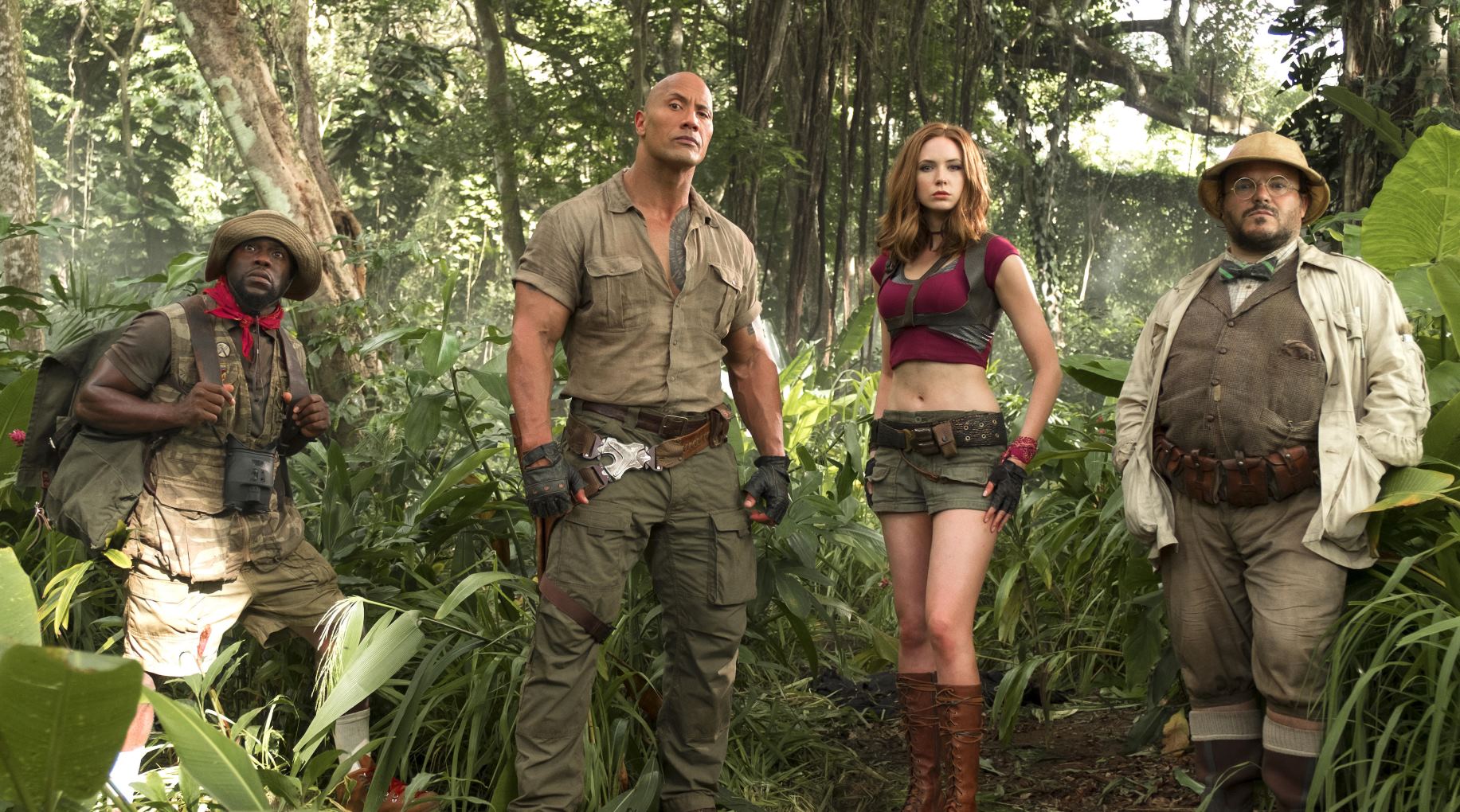GamesRadar+ Verdict
The action’s passable and Gillan makes a decent fist of an underwritten character. Otherwise, this Jumanji makeover’s a losing game.
Why you can trust GamesRadar+
“This is Alan’s home – I’m just living in it,” someone says in Jumanji: Welcome to the Jungle, in reference to the character Robin Williams played in the 1995 original. It’s a poignant tip of the hat to the late actor, whose tragic absence is an elephant in the room every bit as apparent as the computer-generated pachyderm that shows up on screen. What it also does, alas, is highlight one of this sequel-slash-reboot’s key deficiencies: the lack of any significant connective tissue with its forerunner.
Gone is director Joe Johnston, whose seat behind the camera is now filled by Bad Teacher’s Jake Kasdan. Absent too are the first film’s writers, supporting actors and creative personnel (most notably composer James Horner, who died in 2015). Even Jumanji’s different this time around: the arcane board game of Johnston’s movie has now morphed into an Atari-style videogame.
The result is more like Kong: Skull Island than Jumanji, with Kasdan jettisoning one of the latter’s most subversive pleasures: the anarchic juxtaposition of a small American town with rampant feral beasties, mischievously cast onto the unsuspecting streets by a game with a mind of its own.

The game still thinks for itself in WTTJ, but within much more restrictive parameters. Here the set-up is that each player has his or her own personal avatar, a body-switch gimmick that enables a geek to resemble The Rock, a wallflower to look like Karen Gillan and a cellphone-obsessed girl to become Jack Black. (Kevin Hart completes the quartet as a whiny weakling.)
The disconnect between player and proxy is relentlessly milked, as in the scene where Black performs mouth-to-mouth on a young man he/she has a crush on. Yet it’s a joke that only goes so far, dependent as it is on its stars’ established screen personas and a depressingly retrograde view of gender roles. (At one point Black gives Gillan tips on how to ape a sexpot seductress.)
With only 12 lives between them, the mission at hand is to return a glowing green jewel to its rightful place without being eaten by hippos, stung by mosquitoes or gunned down by Bobby Cannavale’s villain and his motorcycling goons.
Along the way, they hook up with an earlier captive of the game (Nick Jonas in a role intended for Tom Holland) whose pilot skills come in handy during the film’s best set-piece: a hair-raising chopper chase through a canyon with a horde of stampeding rhinos in hot pursuit.
Complete every level and they have a chance of getting back to the real world, and their real bodies. If they don’t, they are destined to stay in Jumanji forever – which, considering it’s really Oahu, doesn’t seem much of a hardship.
Those craving CGI critters, Gillan in a crop top and more of the Dwayne Johnson-Kevin Hart bromance they saw in Central Intelligence won’t be disappointed. Yet even they’d agree this is little more than a sporadically diverting but ultimately soulless exercise in brand exploitation. At one point in the story, each of its protagonists discovers they have a pop-up screen inside them revealing their various strengths and weaknesses. Were this caper to have one of its own, it wouldn’t make for happy reading.
Neil Smith is a freelance film critic who has written for several publications, including Total Film. His bylines can be found at the BBC, Film 4 Independent, Uncut Magazine, SFX, Heat Magazine, Popcorn, and more.



